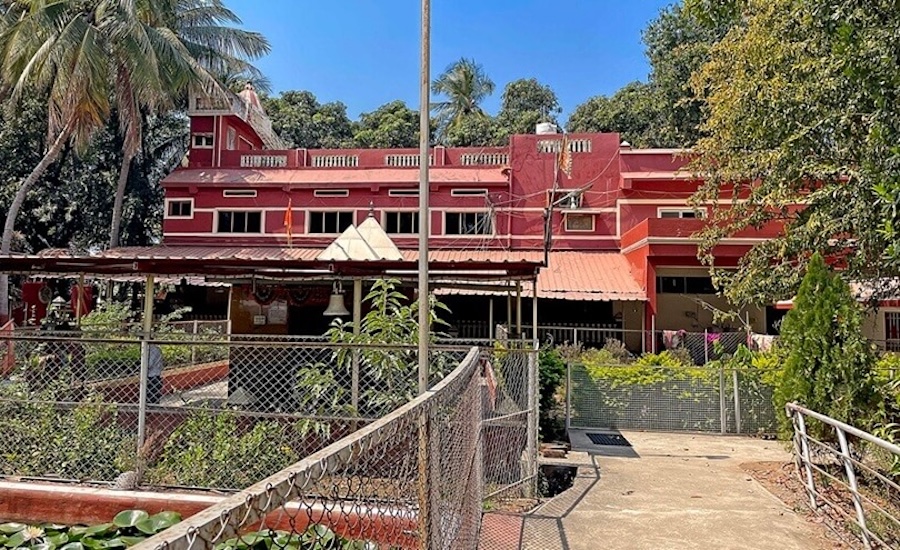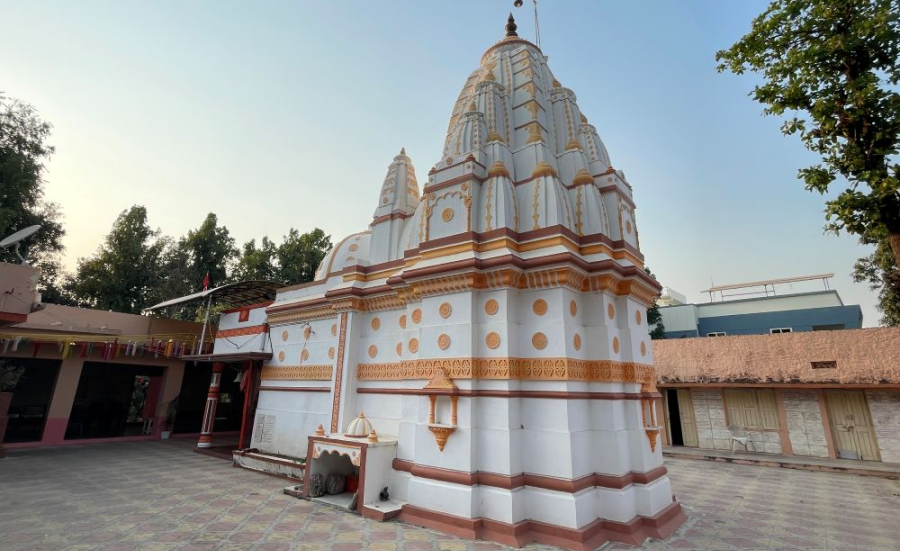
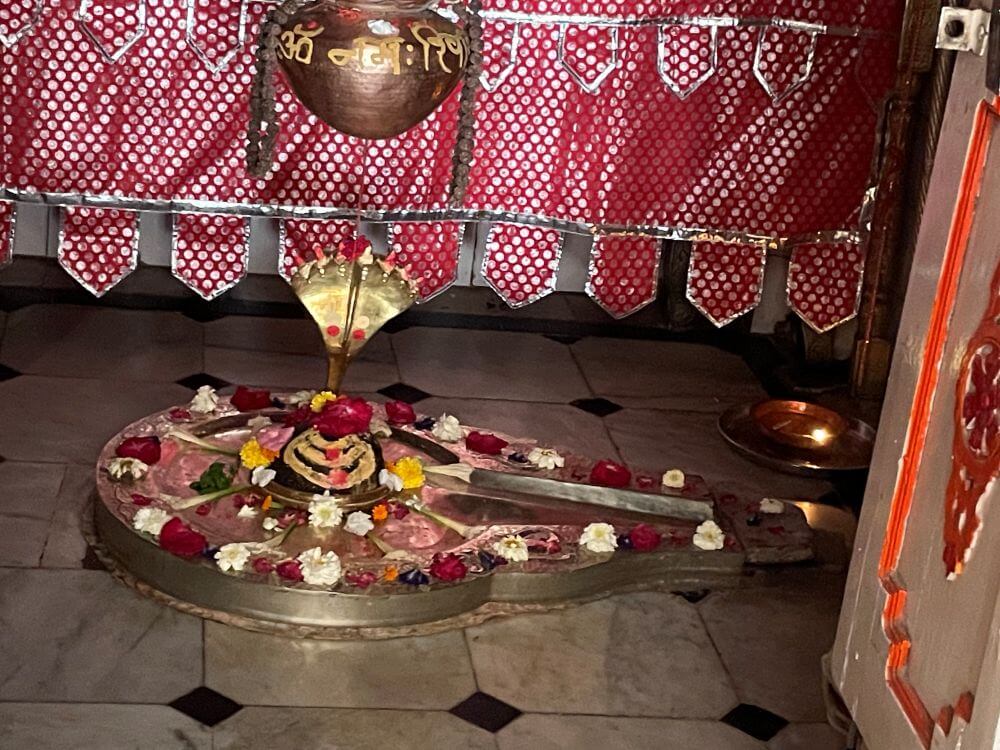
The Tilkeshwar Mahadev Temple in Tilakvada (Dist. Narmada), known as the meditation ground for many sages including Gautam Rishi and Kapil Muni, is an important pilgrimage site on the northern banks of the Narmada river. Devotees believe that worshipping Lord Shiva here with white sesame seeds fulfills all their wishes. Close to this temple is the Narmada Mata Temple, which is also a place of reverence for pilgrims. Being the only temple dedicated to Narmada Mata along the northern circumambulation route (Uttarvahini Parikrama Marg), hundreds of devotees and pilgrims visit daily for darshan.
It is said that the Shivling at Tilkeshwar Mahadev Temple was installed by King Tilak, the son of Vaivasvata Manu. This is also mentioned in the Skanda Purana. 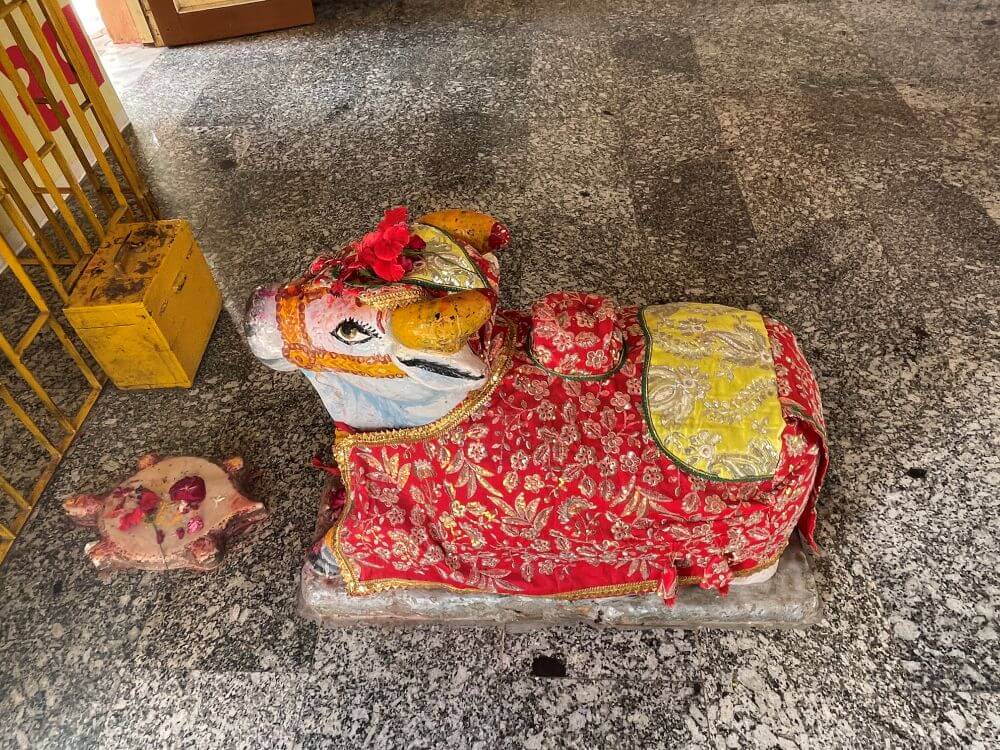 According to mythological narratives, various kings performed penance at this site during different eras. The site was known by several names based on these kings, including Priyavrataeshwar Mahadev, Chaitreshwar Mahadev, Shantikeshwar Mahadev, Sattapakeshwar Mahadev, Shatadhumne Mahadev, and Tilkeshwar Mahadev. After cursing Ahilya, Gautam Rishi performed penance on the banks of the Narmada. At that time, this pilgrimage site was recognized by the name Sattapakeshwar Mahadev. One day, King Tilak visited Gautam Rishi and was informed about Sattapakeshwar Mahadev. Enchanted by the beauty of this place and its surroundings, King Tilak performed penance here to please Lord Shiva and subsequently installed the Shivling using sesame seeds for worship. Hence, this place came to be known as ‘Tilkeshwar Mahadev.’
According to mythological narratives, various kings performed penance at this site during different eras. The site was known by several names based on these kings, including Priyavrataeshwar Mahadev, Chaitreshwar Mahadev, Shantikeshwar Mahadev, Sattapakeshwar Mahadev, Shatadhumne Mahadev, and Tilkeshwar Mahadev. After cursing Ahilya, Gautam Rishi performed penance on the banks of the Narmada. At that time, this pilgrimage site was recognized by the name Sattapakeshwar Mahadev. One day, King Tilak visited Gautam Rishi and was informed about Sattapakeshwar Mahadev. Enchanted by the beauty of this place and its surroundings, King Tilak performed penance here to please Lord Shiva and subsequently installed the Shivling using sesame seeds for worship. Hence, this place came to be known as ‘Tilkeshwar Mahadev.’
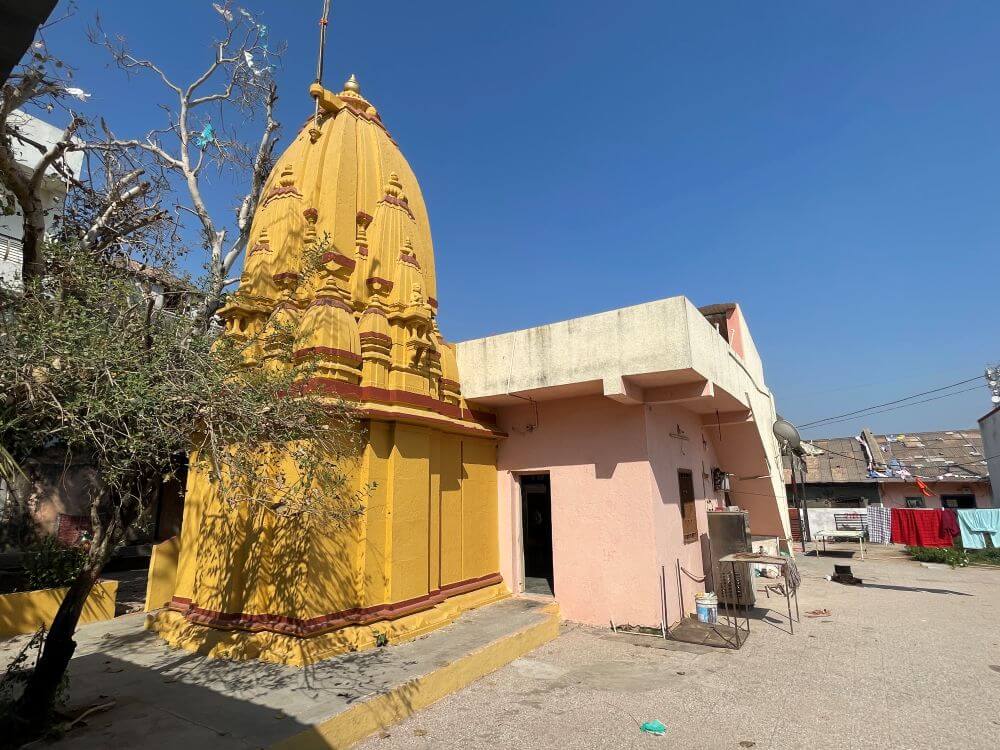 This place is named Tilakvada after King Tilak. The Narmada River is considered to be the daughter of Lord Shiva. The Puranas mention that the Narmada River flows here as a northern stream to have a darshan of her father, Tilkeshwar Mahadev. Her temple is also located in this village.
This place is named Tilakvada after King Tilak. The Narmada River is considered to be the daughter of Lord Shiva. The Puranas mention that the Narmada River flows here as a northern stream to have a darshan of her father, Tilkeshwar Mahadev. Her temple is also located in this village.
Performing the Narmada Parikrama (circumambulation) is considered a religious vow. Covering approximately 3600 km on foot can be arduous for many devotees. The northern circumambulation, which serves as an alternative for such devotees, begins from Tilakvada. The Narmada River flows northward at Tilakvada and continues as such until Ramapura before reverting its course. According to both the Skanda Purana and Narmada Purana, those who perform this circumambulation between Tilakvada and Ramapura during the Chaitra month earn the merit of completing the entire Narmada Parikrama.
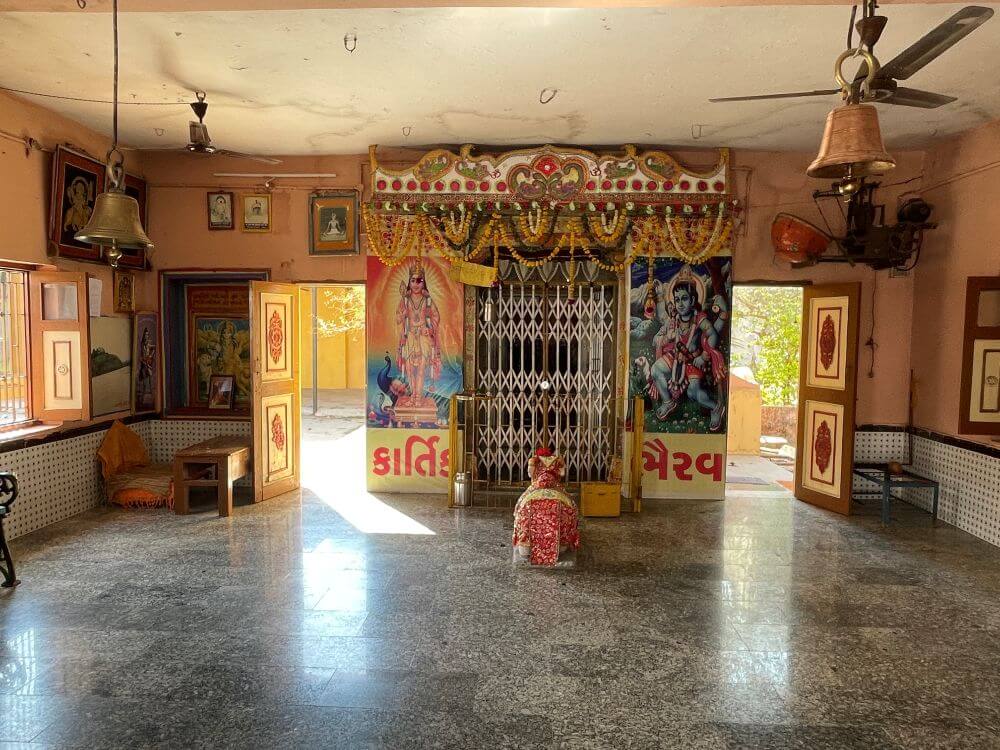 Located 60 km from Vadodara, Tilakvada was one of the most significant revenue stations in the Baroda princely state. In addition to Tilkeshwar Mahadev, this sacred area includes temples like that of Dnyanamudradhari Hanuman, Rameshwar Mahadev (established by Lord Ram while going to exile), Vasudev Kuti, an ancient temple of Gautameshwar Mahadev, and an ancient temple of Saptamatrikas manifested through Gautam Rishi’s prayers. It is not considered that the northern Narmada circumambulation is complete without visiting all these places.
Located 60 km from Vadodara, Tilakvada was one of the most significant revenue stations in the Baroda princely state. In addition to Tilkeshwar Mahadev, this sacred area includes temples like that of Dnyanamudradhari Hanuman, Rameshwar Mahadev (established by Lord Ram while going to exile), Vasudev Kuti, an ancient temple of Gautameshwar Mahadev, and an ancient temple of Saptamatrikas manifested through Gautam Rishi’s prayers. It is not considered that the northern Narmada circumambulation is complete without visiting all these places.
This ancient temple is situated in the center of the village. Upon entering through the main gate, one can see the temple structure directly ahead. In front of the temple is a courtyard covered with a large tin roof. To the right of the temple is a shrine dedicated to Hanuman. 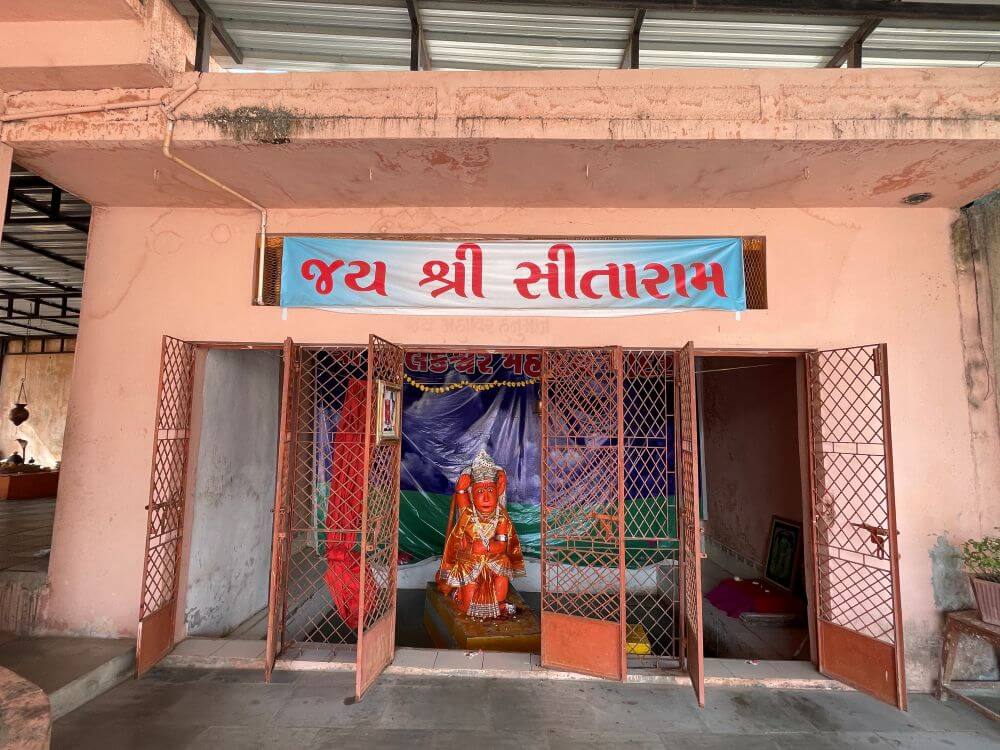 This temple features a standing idol of Hanuman adorned with vermilion and wearing rich garments.
This temple features a standing idol of Hanuman adorned with vermilion and wearing rich garments.
The architecture of this simply designed modern temple consists of a assembly hall (Sabhamandap), antechamber (Antarala), and sanctum (garbhagriha). There are three entrances on one side of the assembly hall and two on the back side. Various deities’ images are placed on the walls of the hall. A statue of Nandi stands in front of it with a tortoise nearby.
On the left side of the entrance to the antechamber are large images of Kartik Swami and Bhairav on either side. Inside, there is a small idol of Hanuman on one side and Ganesh on the other side in separate shrines. The entrance to the sanctum is made of stone with a swastika carved as an auspicious symbol above it. 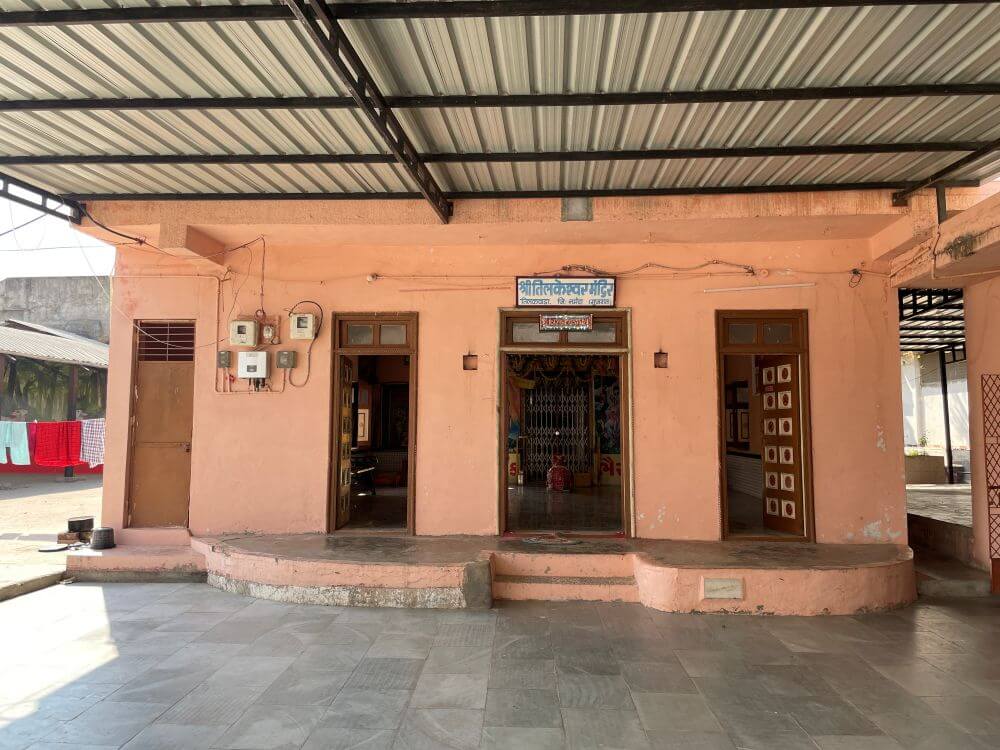 The threshold is elevated with a half-moon stone placed upon it.
The threshold is elevated with a half-moon stone placed upon it.
In the center of the sanctum is a Shivling made of brass with a serpent holding a canopy over it. Behind this Shivling stands an idol of Parvati Mata on an elevated platform, with Lord Shiva’s face beside her on her right side. To the left side of this temple is a shrine for Lord Krishna.
Devotees believe that Lord Shiva’s presence here is alive and many come for darshan regularly. During their circumambulation around Narmada, thousands bow down before Shiva Shambhu at this temple. Bhagwat Saptah (weeks) are organized here from time to time. On the last Monday of Shravan month, lotus flowers made using ghee are offered here.
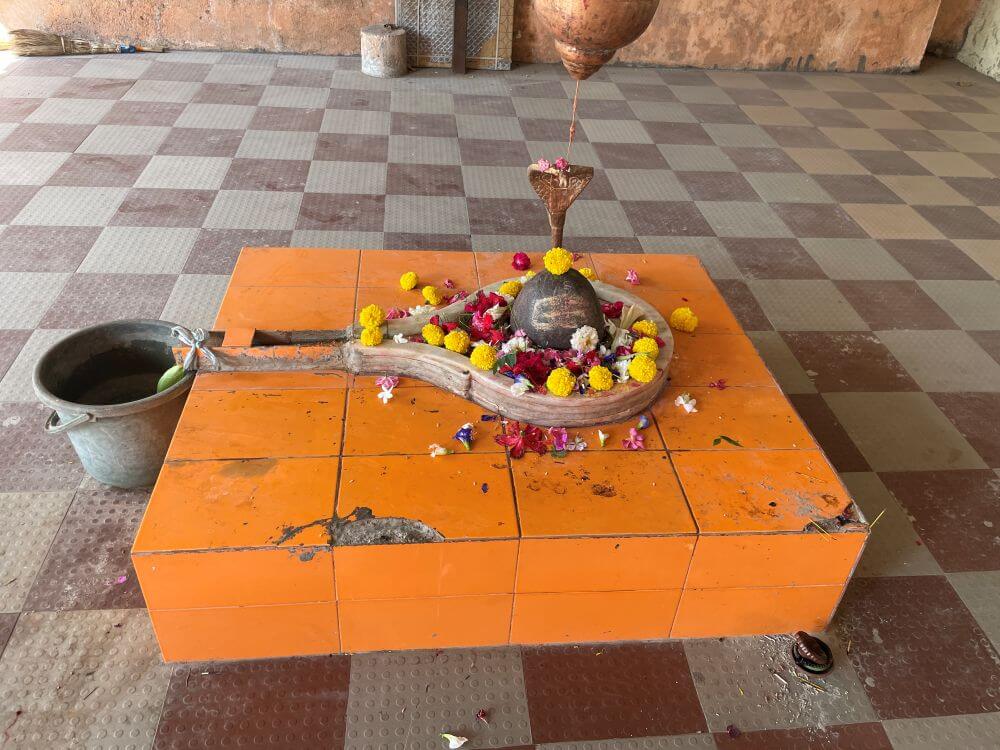 It is said that around 1790, a saint from Maharashtra visited Tilakvada while performing Narmada Parikrama. While resting under a banyan tree, he had a dream vision where Narmada Maiya told him that this area belongs to her northern stream and instructed him to build her temple here. Upon waking up, he initially thought it was just an illusion but received this vision twice more from Mata before realizing it was indeed her command.
It is said that around 1790, a saint from Maharashtra visited Tilakvada while performing Narmada Parikrama. While resting under a banyan tree, he had a dream vision where Narmada Maiya told him that this area belongs to her northern stream and instructed him to build her temple here. Upon waking up, he initially thought it was just an illusion but received this vision twice more from Mata before realizing it was indeed her command.
While he was contemplating this vision, a horseman approached him. He then sent messages with him to his devotees in Maharashtra and Andhra Pradesh, stating that he wished to build a beautiful temple for Narmada Mata at Tilakvada on her northern bank. Following his call, his devotees donated silver coins for constructing Narmada Mata’s temple. The current site where the temple stands was originally owned by a potter. This saint purchased it from him to build Narmada Mata’s temple here, which is considered highly sacred.
